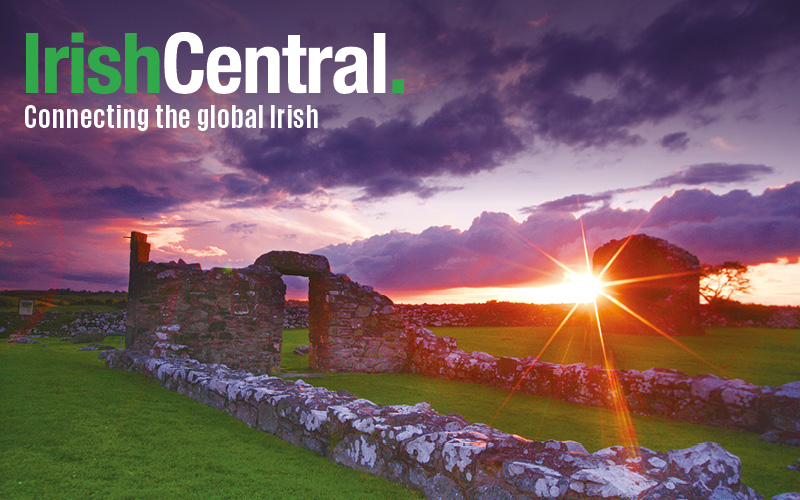For sixty years, Comhaltas Ceoltóirí Éireann – Irish Musicians Association – has been spreading the gospel of traditional Irish music all over the world, setting up over 400 community-based branches, including 44 in North America.
Today many consider Comhaltas to be one of Ireland’s most successful cultural groups, having trained generations of Irish to study, perform, promote and preserve traditional Irish culture. Tens of thousands of youngsters have learned to play music on traditional instruments, while over two million people attend the sessions, concerts, festivals and workshops sponsored by Comhaltas annually.
“Without hesitation, I can say that traditional Irish music song and dance would not be vibrant or visible on either side of the Atlantic without Comhaltas,” says Helen Gannon, Chairperson of CCE North America and founder of the Comhaltas branch in St. Louis.
“Comhaltas saved Irish music from near extinction,” says Seamus Connolly, ten-time All Ireland fiddle champion, who was a young boy in County Clare when Comhaltas first formed. “When Comhaltas first began teaching, Irish music quickly became more popular.”
Families are at the heart of the Comhaltas movement, since it is family stewardship which keeps cultural traditions alive. Grandparents, parents and children play music together, and then pass it along, making folk traditions last for generations and centuries. You need only look at the great traditional Irish musicians playing today, to note how many of their parents and children are musicians as well.
Even non-musical family members contribute to the Comhaltas cause by raising funds, baking bread, making costumes and taking long car trips to the competitions.
“There is a richness about our heritage that feeds our need for the past, both for ourselves and for our children and their children,” says Gannon.
As with all families, there are the occasional squabbles from within, but overall Comhaltas has nurtured a tight-knit camaraderie and allegiance to its original vision that has benefited Irish music and culture immensely.
The Early Years
CCE was formed in 1951 in Mullingar, County Westmeath by traditional musicians from the Pipers Club in Dublin and other Gaelic culture advocates from around Ireland. They sought to improve the standing of traditional Irish music, dance and language in Ireland, which had suffered due to a general cultural and economic stagnation on the island, and from the emergence of an American-dominated cultural ethos after World War II.
“Our founders realized that with modernization in Ireland the traditions were quickly disappearing,” Gannon said.
“People were concentrating on getting their lives together after the war,” Connolly remembers. Comhaltas organizers “felt that something needed to be done to preserve the music…they showed great vision and foresight.”
The first Fleadh Cheoil (festival of music) organized by Comhaltas in May 1951 was poorly attended, but it helped set in motion a renewed interest in Irish music. Today the Fleadh is one of Ireland’s most popular events: the one in Cavan last August drew 300,000 people.
In the early years, the Comhaltas movement was complemented by men like Ciaran MacMathuna of Radio Éireann, who recorded unknown musicians in rural areas, and Sean O Riada, a talented Irish musician, composer and arranger.
O Riada’s ensemble, Ceoltoiri Chua-lann, gave Irish music a special distinction during the 1950s through concerts and radio appearances. Paddy Moloney and others from Chualann went on to form the world-renowned Chieftains.
Moloney in turn admired MacMathuna. “I have a great respect for Ciaran’s contributions to the revival of Irish music,” Moloney once told an interviewer: “He traveled around Ireland and persuaded the people to come out and play. (He) got rid of their shyness…about their music.”
Also in the 1950s, political leaders like Sean Lemass and Sean MacBride unveiled a new vision of Ireland that would value its cultural and family traditions even while promoting global trade, tourism and economic growth.
Comhaltas, grounded as it was in community centers, local pubs, and parish halls, became the perfect vehicle for restoring Irish music to the forefront of Irish life, as it had been in earlier centuries. Before long, every county in Ireland had a Comhaltas branch, while in Britain and Scotland chapters formed in Liverpool, London and Glasgow, and other places with large Irish communities. Eventually that enthusiasm spread around the globe, and today branches of Comhaltas flourish in Japan, Australia, and Argentina and in several European countries.
ComhaltasComes to America
The Comhaltas wave didn’t reach American shores until 1972, but then it caught on rapidly.
Paul Keating, public relations officer for Comhaltas North America, says that in the early years, “Comhaltas was a lifeline for immigrants who came out to America…it provided a direct connection to the old country.”
Keating credits Bill McEvoy, who founded the Comhaltas branch in Mineola, Long Island, for organizing the first Comhaltas concert tour in North America in 1972.
“Comhaltas was a pioneer in putting together high quality Irish music productions around the United States,” Keating says. “The concerts were successful and eye-opening, with great traditional musicians, none of whom were household names in America.”
Among the musicians on the first tour were Paddy Glackin, Joe Burke, Tommy McCarthy Sr., John Joe Gardner, and Seamus Connolly.
“It was my first time in America, and I was 28 years old,” Connolly recalls. “We visited cities like Washington, Chicago, Philadelphia, Detroit and New York.
“The biggest thrill for me was that I got to meet some of my musical heroes: Johnny McGreevy in Chicago, Andy McGann, Paddy Reynolds, Jerry Lynch and Martin Mulhaire in New York, and Ed Reevy in Philadelphia.
“And for me, that remains one of the great things about Comhaltas – the competitions and concerts gave you the chance to meet the old masters and to learn from them.”
Comhaltas branches quickly formed around cities with large Irish populations. CCE organizer Bill McEvoy enlisted Armagh fiddler Louis Quinn, a founding father of the USA-based Irish Musicians Association in the 1950s, helped to incorporate IMA’s chapters into Comhaltas branches, thereby shaping a formidable Irish music movement in America.
In Boston, fiddler Larry Reynolds, who emigrated from Ballinasloe, Galway in the 1950s, remembers Comhaltas as a welcome addition to Boston’s flagging Irish scene.
“The Dudley Street dance hall scene had closed, followed by the State Ballroom on Mass Ave, and after that, the music went into pubs and small halls around the city, in Dorchester, Somerville…it was all spread out,” he says.
In 1975 Reynolds, along with Pat and Mary Barry, Billy Caples and John Curran, formed the Boston branch, starting at the VFW Hall in Allston, then moving to the Canadian American Club in Watertown, where it meets today. The group’s weekly sessions and set dancing classes quickly attracted Irish and Americans, college students, and Cape Breton and American folk musicians. Today the Boston branch has 500 members, making it one of the largest chapters in the world.
Due largely to Irish-American demographics, Comhaltas initially built a strong presence in the New England, mid-Atlantic and Midwest regions. Then later, CCE expanded across the United States, and today there are Southern branches in Florida, Georgia, Louisiana and Texas, and western chapters in California and Arizona. Canada also boasts ten chapters, from New Brunswick to Alberta.
In fact, 2012 marks the 40th anniversary of Comhaltas North American, and Keating says plans are underway to celebrate in New York and other cities.
Learning to Play
While festivals, concerts and sessions mark the outward popularity of Comhaltas, many say the enduring legacy of CCE is its educational programs.
In Ireland, CCE educational initiatives include a Teacher Training Diploma Course, a Performance Certificate, and since 1999, an exam system in association with the Royal Irish Academy of Music.
Comhaltas has encouraged the use of technology, urging branches to develop websites, post YouTube videos, and create Facebook sites to promote their activities. And Comhaltas headquarters in Dublin has an extensive archive of tapes and videos that is available online.
But the old-fashioned method of classroom instruction remains the bread and butter of CCE’s educational program.
“In New York, you just have to look at the caliber of people who began teaching and getting involved in competitions,” says Paul Keating.
He’s referring to musicians from the New York metro area – like Rose Conway Flanagan, Margie Mulvihill and Patty Furlong of Pearl River, Michelle Bergin McLoughlin of Woodlawn and Annmarie Acosta of Rockaway – who have taught and inspired dozens of All-Ireland caliber musicians in recent years.
In addition, many premier musicians like Brian Conway, Joanie Madden, Eileen Ivers and Jerry O’Sullivan give workshops and music instruction at festivals and college campuses while they’re touring as performers.
In Boston, the Comhaltas branch created a Music School in 1997 as a focal point for the many teachers and students in the region, says Comhaltas official Frank Kennedy, who was North American Provincial Chairman from 1999-2004.
Working with Seamus Connolly, Sullivan Artist in Residence at Boston College, and Comhaltas member Phil Haughey, the Comhaltas School set up musical classes at Boston College and Harvard University, where up to 150 children a year take lessons every Saturday.
In 2001, Boston College also became the home of the CCE North America Collection of Irish Music Materials, says Elizabeth Sweeney, Irish music archivist at the John J. Burns Library. The collection offers future scholars a chance to study Irish music and Comhaltas activities in America.
All in the Family
The massive attendance at this summer’s Cavan Fleadh is a reminder that Comhaltas is a high profile public organization that thrives on social interaction and cultural engagement.
"The structure of Comhaltas around playing in communal style makes for a highly social activity that is attractive across generations,” says Brian O’Donovan from Clonakilty, Cork, host of Boston’s popular radio show Celtic Sojourn on WGBH. “The emphasis on competition, while often criticized, has created these large gatherings that contribute (to Irish identity) in interesting and unpredictable ways.”
In the United States, “Competitions are held in every state and on any given weekend you can find at least four Feiseanna,” says Helen Gannon. “Families are traveling together, enjoying the fun and camaraderie of these events.”
Comhaltas, says Connolly, deserves credit in America for “giving people a sense of community and a connection to the homeland.”
Fiddler Jimmy Devine, who grew up in Yonkers, NY and now lives in Rhode Island, still recalls how he was welcomed into the fold when he first took up the fiddle. “I got introduced to Irish music at the Irish Arts Center in New York through Bill Ochs, Nancy Lyons and Chuck O’Donnell, which led me to Comhaltas. We used to go up to the Michael Coleman branch and play at the Broadstone Inn sessions in Inwood,” he says.
“When I went to the Comhaltas center in Monkstown, Dublin, I received a very warm reception from musicians there. Seamus MacMathuna told me, ‘You play like one of our own,’ and that compliment encouraged me for years!”
And that sense of family and community is what pays dividends for the well-being of Irish music. Since moving to Rhode Island in the 1980s, Devine has taught a number of outstanding fiddlers there, including Tina Lech and his own daughter Hannah.
“I got my fiddle from my dad Joe Devine, who died when I was twelve, and today, my daughter Hannah is playing that same fiddle. Passing on the music is what it’s all about.”
And that is what Comhaltas has done admirably for sixty years.




Comments